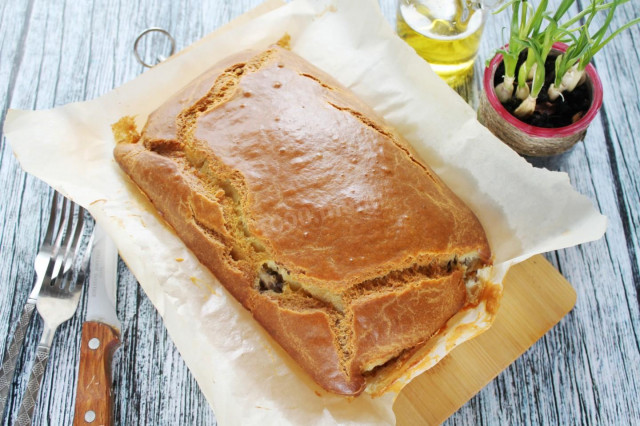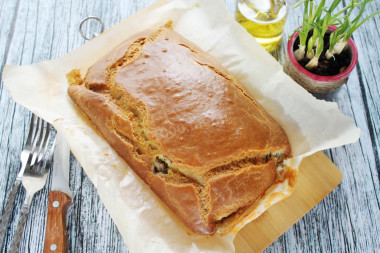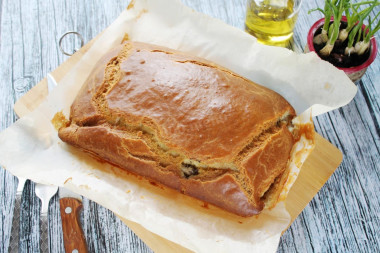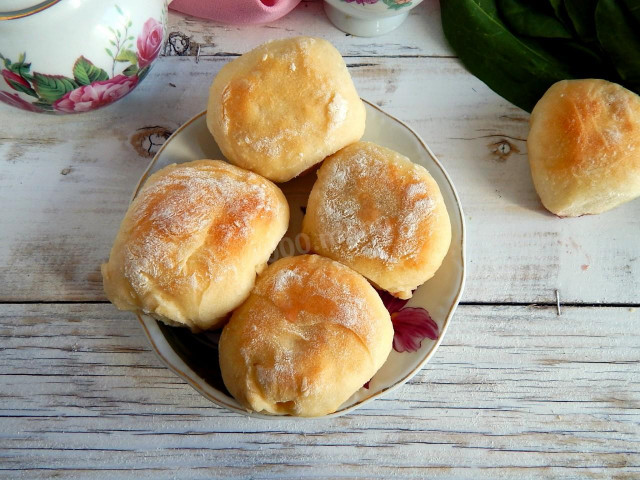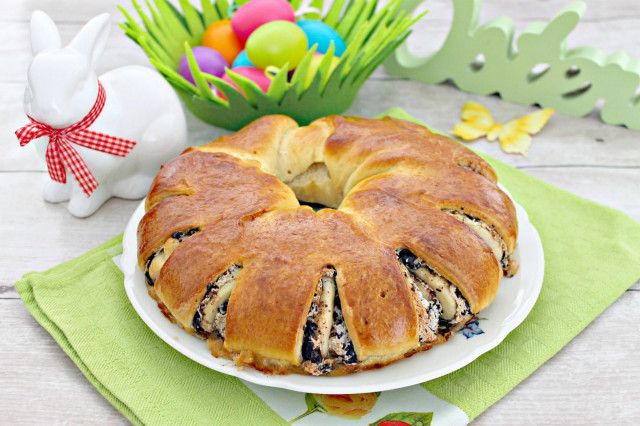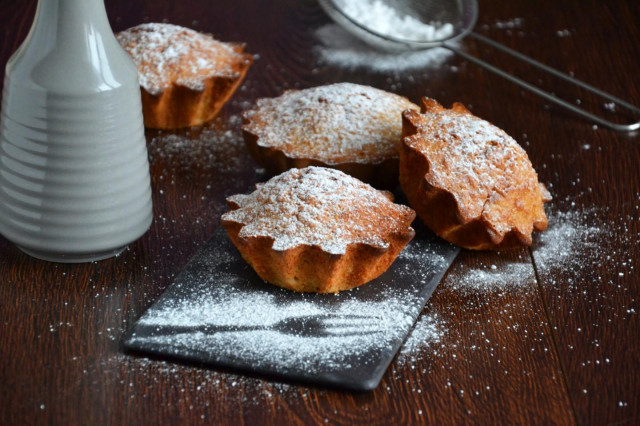Composition / ingredients
Step-by-step cooking
Step 1:
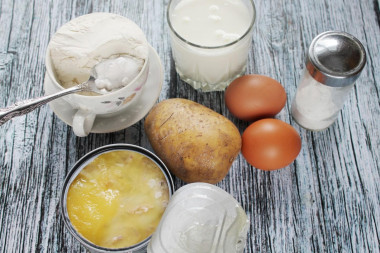
How to make a jellied pie with canned fish and potatoes? Take the following products: flour, eggs, kefir, soda and baking powder - for the dough, and for the filling - potatoes and canned fish. Any fish in its own juice or oil is suitable for this pie: pink salmon, saury, sardine, etc. I have ivasi in oil.
Step 2:
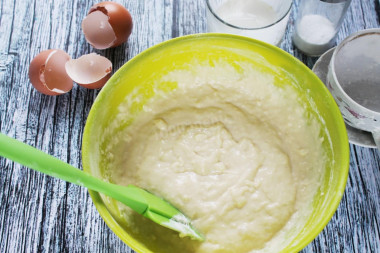
Prepare the aspic dough: first mix kefir with soda, as soon as the bubbles go, add eggs, salt, and then gradually pour in the sifted flour with baking powder. Note that the flour may take a little more or a little less. Focus on the consistency, the dough should turn out like thick sour cream (see photo). Set the dough aside, and in the meantime, prepare the filling.
Step 3:
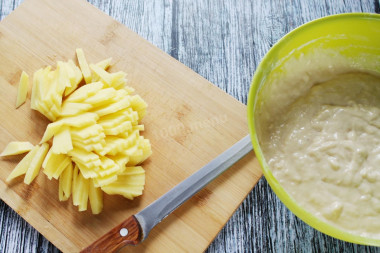
For the filling, peel a medium-sized potato, thinly slice the tuber into strips. In many recipes, potatoes are used raw, but some varieties of potatoes take a long time to cook and do not have time to bake together with the pie, so I suggest bringing it to half-readiness by throwing it into boiling water and boiling for 5 minutes, or even easier - put it in the microwave for 7 minutes. So it is guaranteed to bake in the pie until ready.
Step 4:
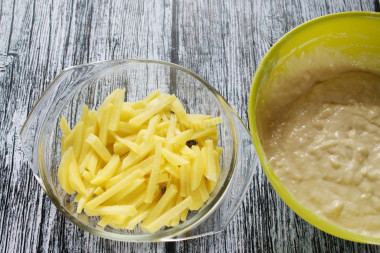
I chose the second option: I put the potatoes in a microwave saucepan, added a couple of spoonfuls of water and put it on maximum power in the microwave for 7 minutes. The potatoes are cooked almost to readiness, the rest will get already in the pie!
Step 5:
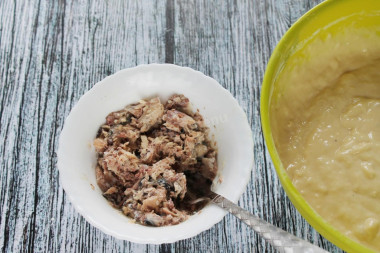
Canned fish (in this case, it's ivasi in oil) drain from the filling and crush with a fork into a homogeneous mass, but not pasty, but with pieces. If you have fish in its own juice, you also need to drain the juice from it and chop it into pieces.
Step 6:
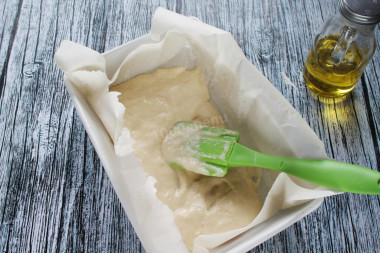
Place baking paper in a baking dish and brush it with sunflower oil. If you have a silicone mold, then you can just lightly lubricate it with oil or not lubricate it at all. Lay out half of the dough.
Step 7:
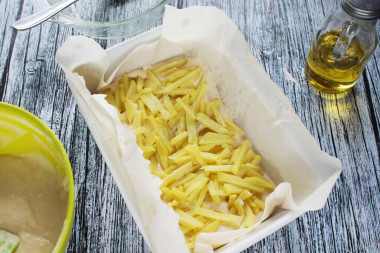
Put the potatoes on the dough in an even layer. You can add ground pepper or any dried herbs and spices to your liking.
Step 8:
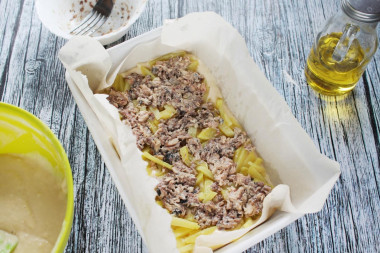
Put a layer of canned fish on the potatoes, level with a spatula.
Step 9:
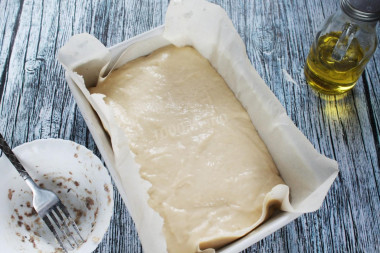
And carefully pour out the remaining batter. Put the pie in a preheated 180 degree oven (you need to turn it on in advance, 10-20 minutes before baking), for 40 minutes. I baked at 180 degrees for 30 minutes, and after half an hour I lowered the heat to 150, but did not open the oven, and baked for another 10 minutes. The time and temperature are indicated approximately, be guided by your technique.
Step 10:
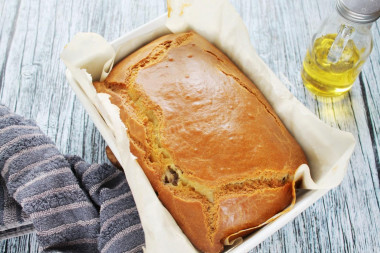
When the top layer of baking is slightly browned, check it for readiness: pierce it with a wooden skewer in several places, if the skewer comes out dry, then the pie is ready. The pie turned out ruddy, even golden. Do not take it out of the oven immediately, turn it off and let the pie stand in the oven for another 10 minutes so that it "reaches".
Step 11:
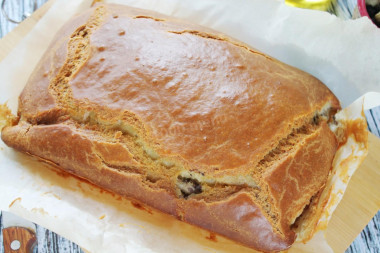
Then remove the pie from the oven, after 5 minutes, free it from baking paper.
Step 12:
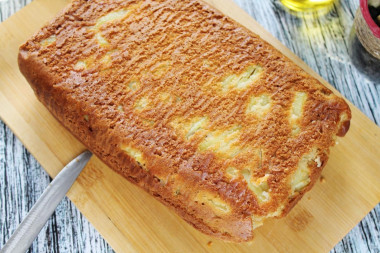
That's how it turned out in the reverse direction. Cover it with a napkin until it cools, the dough will go limp.
Step 13:
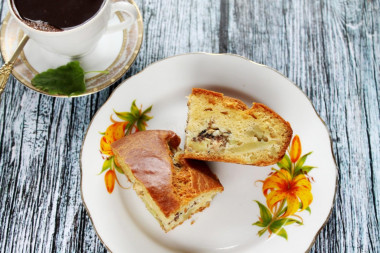
The aspic pie with canned fish and potatoes is ready. Cut it into portions and serve it on the table. Bon appetit!
Be prepared for the fact that you may need more or less flour than indicated in the recipe. Focus not on the amount of flour, but on the desired consistency of the dough. To avoid mistakes, read about flour and its properties!
Important! The size of the mold must match the number of ingredients. If you do not have a shape of a diameter suitable for the recipe or you want to bake a pie or a cake of a larger or smaller size, an article about how to make the right calculations and not make a mistake will help, how to choose the shape of the desired diameter .
Keep in mind that everyone's ovens are different. The temperature and cooking time may differ from those specified in the recipe. To make any baked dish successful, use useful information about the features of ovens !
Is it possible to replace baking powder with soda, how to add them correctly so that the baking is lush, how to avoid an unpleasant soda taste and much more, read the article "Baking powder or baking soda - which is better?"
Calorie content of products possible in the dish
- Ripe potatoes - 80 kcal/100g
- Baked potatoes - 70 kcal/100g
- Mashed potatoes - 380 kcal/100g
- Boiled potatoes - 82 kcal/100g
- Potatoes in uniform - 74 kcal/100g
- Fried potatoes - 192 kcal/100g
- Chicken egg - 157 kcal/100g
- Egg white - 45 kcal/100g
- Egg powder - 542 kcal/100g
- Egg yolk - 352 kcal/100g
- Ostrich egg - 118 kcal/100g
- Whole durum wheat flour fortified - 333 kcal/100g
- Whole durum wheat flour, universal - 364 kcal/100g
- Flour krupchatka - 348 kcal/100g
- Flour - 325 kcal/100g
- Kefir fat - 62 kcal/100g
- Kefir of 1% fat content - 38 kcal/100g
- Low-fat kefir - 30 kcal/100g
- Kefir "doctor beefy" 1,8% fat content - 45 kcal/100g
- Kefir 2.5% fat content - 53 kcal/100g
- Salt - 0 kcal/100g
- Saury blanched in oil - 283 kcal/100g
- Atlantic sardine with added oil - 238 kcal/100g
- Sardine in oil - 221 kcal/100g
- Sardine in tomato sauce - 162 kcal/100g
- Mackerel in oil - 278 kcal/100g
- Sprat in tomato sauce - 154 kcal/100g
- Sunflower oil - 898 kcal/100g
- Refined sunflower oil - 899 kcal/100g
- Baking powder - 79 kcal/100g
- Baking soda - 0 kcal/100g

